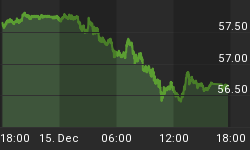The Gulf of Mexico disaster has changed U.S. priorities, costs, and energy supply sources for years to come. But the fact that the U.S. needs energy isn't changing anytime soon, and as mass sources of green energy are still a while away, the most likely alternative might be the most surprising one.
With US$15 billion invested annually in offshore drilling in the United States, the disaster in the Gulf of Mexico means that this money is getting ready to migrate elsewhere. And it is the Athabasca oil sands of Alberta, Canada, that are number one on the list.
Given the amount of bad press the oil sands get, this could come as a shocker. But technological advances and improvements in recovery methods, as well as reduction of water usage and greenhouse gas emissions, have made oil sands a viable and popular option for the future of U.S. energy.
The numbers, too, are looking in their favor. Out of the 1.34 trillion barrels that is the world's total proved oil reserves (2009), only about 20% (270 billion barrels) of this number is actually available to free-flowing capital investment - the vast majority is in the tight grip of various national oil companies.
And a good chunk of these "free-market" barrels, about 178 billion, is sitting underneath the feet of Canadians, or as some call them, the Crazy Canucks. For a country that runs on oil, the United States couldn't have been presented with a better lifesaver. Compared to alternatives such as Chavez's Venezuela or the oil fields of the Middle East, reliable oil from politically stable and friendly Canada is by far the easier pill to swallow.
As it is, roughly one in every six barrels of oil consumed by a U.S. citizen today comes from the Canadian oil sands. The fact that infrastructure is already in place for oil sands development and oil already flows through pipelines between the two countries only sweetens the deal.
So, we wouldn't be taking a huge step in assuming that any future capital spending that will be diverted away from the Gulf of Mexico will find it hard to bypass Canada. In addition, as global oil supply is affected by the drilling restrictions, in the long term we'll be seeing higher oil prices. While this news might not make the drivers amongst us happy, it couldn't get better for Alberta and the energy companies operating in the oil sands. With oil prices hovering over US$70 a barrel, the stream of investment dollars into the oil sands is guaranteed.
Obama's first-ever Oval Office address has confirmed our expectations of no more growth in the American offshore drilling industry anytime soon. But the Gulf accounted for a large chunk of U.S. oil production (25-30%) and consumption (9% - the entire consumption of France), and that shortfall must be met.
While renewable energy is where the future of U.S. energy lies, according to Obama, it is still some time before green energy producers will be able to meet the full demands of the nation. In the meantime, authorities have also realized the importance of Canada for U.S. energy and are enticing companies with new pipelines. Plans on expanding the Keystone Pipeline, linking up Texas and Oklahoma to 500,000 Canadian barrels a day, have already been drawn up and put into motion.
The turmoil in the U.S. energy market has created a number of opportunities, both in the short and long term. For now, investment into the Canadian oil sands is about to increase dramatically, and things are moving rapidly. We've uncovered the lowest-cost producer with significant upside production, and they're the one on the list as a takeout target by Big Oil.
[Discover the oil sands company Marin thinks so highly of... and get ready to profit when shares shoot up. But oil sands are not the only energy investment to benefit from the Gulf Coast disaster - read more hereor sign up right now for a $39/yr. subscription with 3-month money-back guarantee.]
















